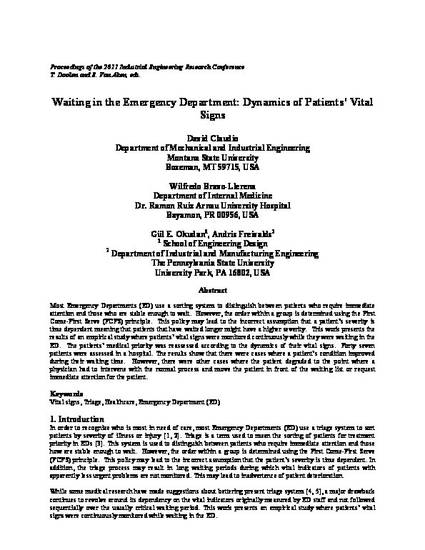
Presentation
Waiting in the Emergency Department: Dynamics of Patients’ Vital Signs
IIE Annual Conference
(2011)
Abstract
Most Emergency Departments (ED) use a sorting system to distinguish between patients who require immediate
attention and those who are stable enough to wait. However, the order within a group is determined using the First Come-First Serve (FCFS) principle. This policy may lead to the incorrect assumption that a patient’s severity is time dependent meaning that patients that have waited longer might have a higher severity. This work presents the results of an empirical study where patients’ vital signs were monitored continuously while they were waiting in the ED. The patients’ medical priority was reassessed according to the dynamics of their vital signs. Forty seven
patients were assessed in a hospital. The results show that there were cases where a patient’s condition improved during their waiting time. However, there were other cases where the patient degraded to the point where a physician had to intervene with the normal process and move the patient in front of the waiting list or request immediate attention for the patient.
Keywords
- Vital signs,
- Triage,
- Healthcare,
- Emergency Department (ED)
Disciplines
Publication Date
2011
Comments
This is a proceeding published as Claudio, David, Wilfredo Bravo-Llerena, Gül E. Okudan, and Andris Freivalds. "Waiting in the Emergency Department: Dynamics of Patients' Vital Signs." In IIE Annual Conference. Proceedings, p. 1. Institute of Industrial and Systems Engineers (IISE), 2011. Posted with permission.
Citation Information
David Claudio, Wilfredo Bravo-Llerena, Gül E. Kremer and Andris Freivalds. "Waiting in the Emergency Department: Dynamics of Patients’ Vital Signs" IIE Annual Conference (2011) Available at: http://works.bepress.com/gul-kremer/147/
